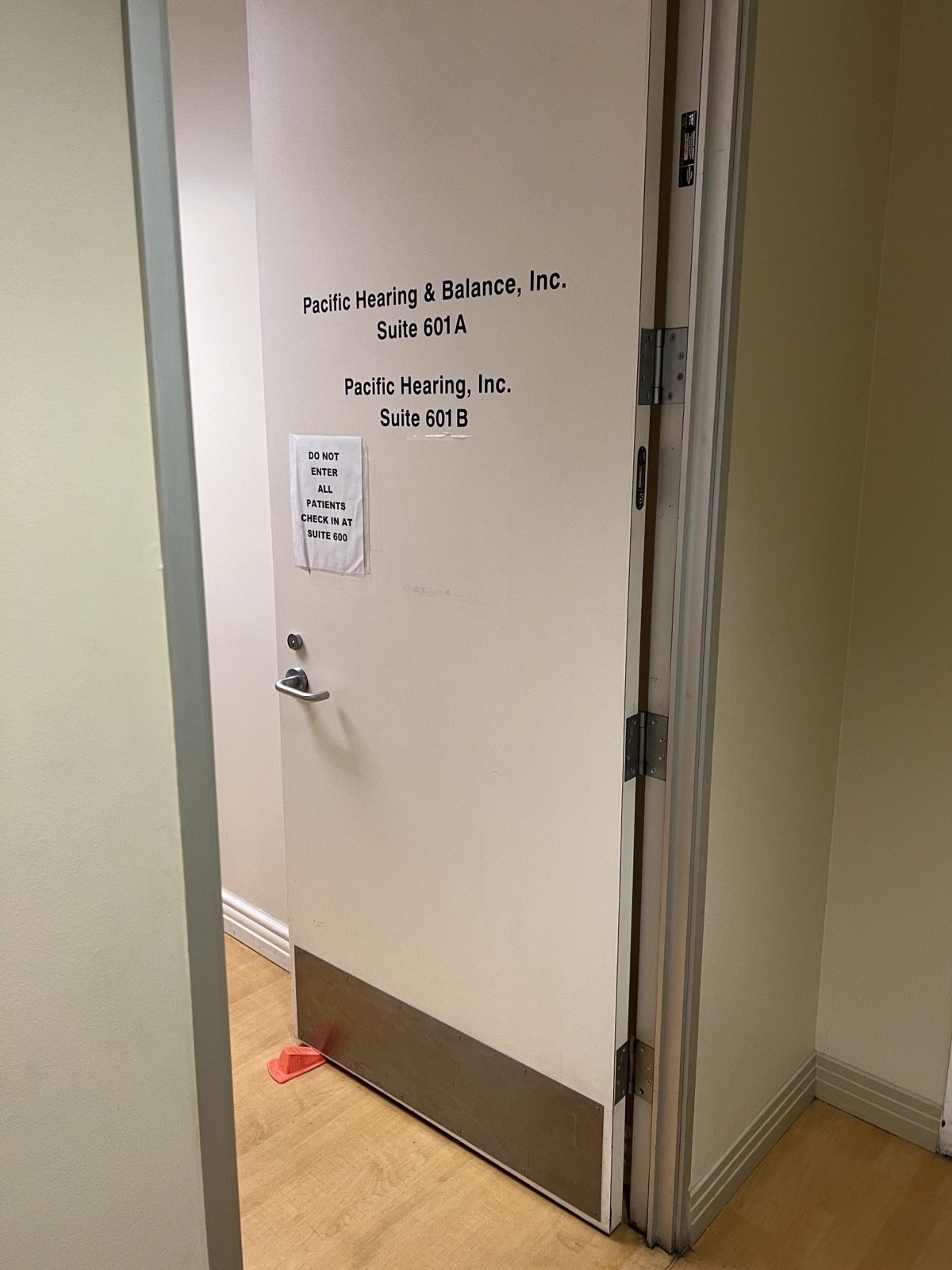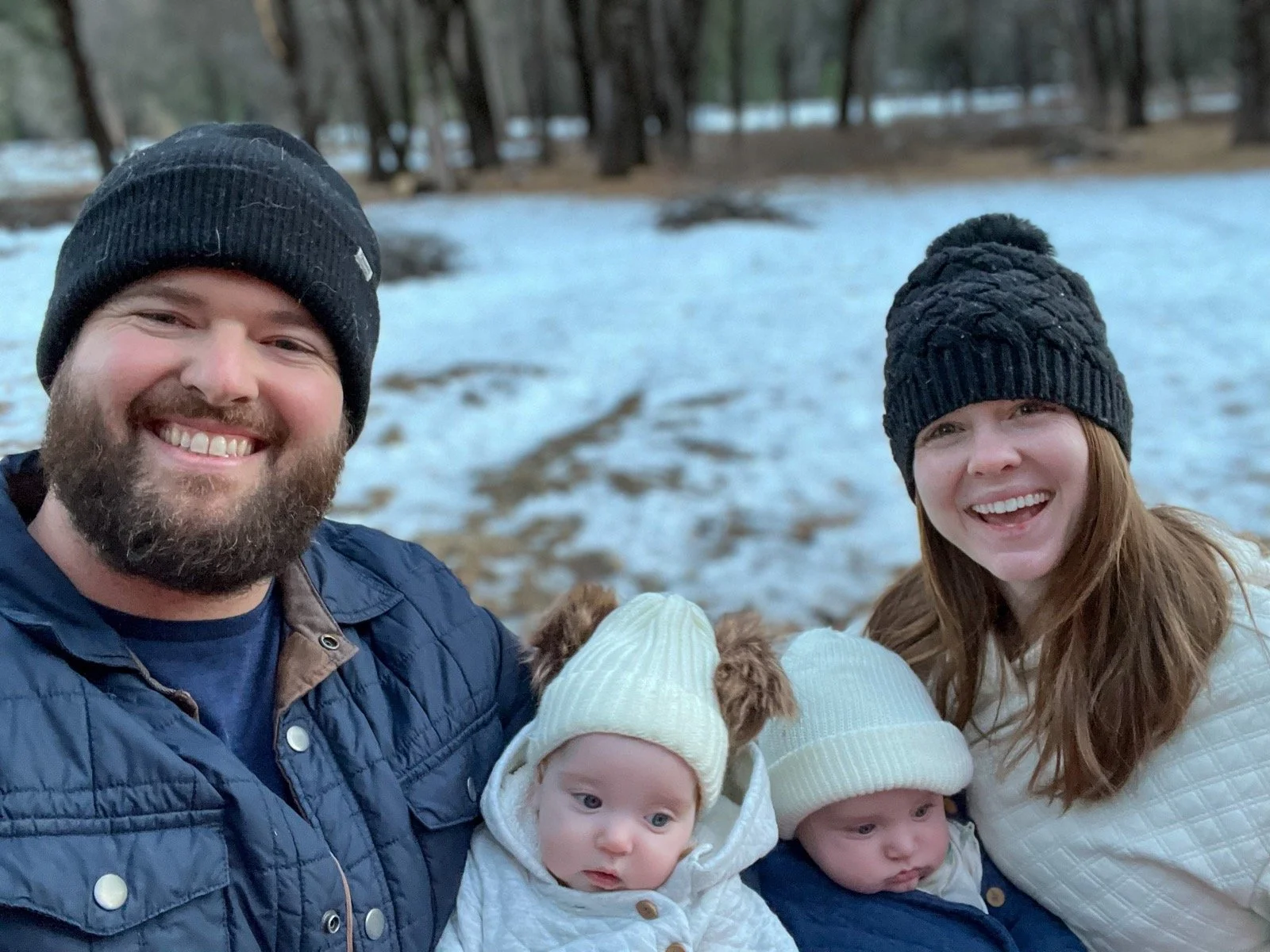What to Expect When You're Getting a Hearing Aid
LMents of Style uses affiliate links. By clicking on certain hyperlinks and buying a product, you may help me make a small commission off your purchase. It's links like these that keep this site going. Thank you for your support!
In case you missed it, I recently shared my story with hearing loss. The headline is that I have dealt with poor hearing my entire life and just recently decided to do something about it. I figured I would get my hearing tested, but had no idea what getting a hearing aid would be like. Even though I would literally be with doctors whose job it was to help me, it still gave me anxiety. What if I couldn’t hear or understand what they had to say or how we would move forward with possible hearing aids? I’m sharing this today in effort to breakdown any boundaries to getting the help you need. Sometimes when we know what to expect, even loosely, we feel better about the unknown. Good hearing is good health and if the only boundary keeping you from getting a hearing aid is a wall of fear, I want to help knock that down for you.
Keep reading to learn more about what my process looked like to get fitted for my Phonak hearing aids at Pacific Hearing here in Los Angeles and what you might expect in your process. Side note - I don’t have a ton of photos of the process as I was trying to 100% pay attention / I couldn’t bring my phone into the testing area, but I will have more details and photos on my next post which will be a hearing aid review. Enjoy!
Before I get into what might happen when you decide to get a hearing aid, let’s talk about insurance. If you aren’t fearful of the appointment, then chances are that money is what is holding you back. Depending on your insurance, your hearing tests will likely be covered, and the device may be too. If you’re unsure, just call your insurance and/or look up the coverage on the portal. Something to keep in mind that feels like common sense but is often forgotten is that if you meet your deductible, your hearings aids should be covered! Several summers ago, my mom unexpectedly had her appendix removed. This was a huge expense and caused her to meet her deductible. She wasn’t happy about the surgery but found a bright side. Because of the hospital visit, she met her deductible and was able to get hearing aids for a fraction of the cost had she had to pay out of pocket in full. She may have lost her appendix, but she gained better hearing because of it!
After figuring out your coverage, the first step in your journey to better hearing is to find an audiologist near you. When you research your insurance, be sure to find a doctor in your network and go from there. I am lucky to be able to go to Pacific Hearing in Los Angeles where they have a wonderful team of audiologists who specialize in everything from hearing tests, hearing aids, balance testing, cochlear implants, and more.
Once you choose your provider and make your appointment, that is when the magic happens, or begins to happen at least! When you arrive, they will do a series of hearing tests to see where you are and recommend some options of hearing aids for you to consider.
The hearing tests they did on me were:
1) Impedance Testing. The doctor puts a probe in your ear to test to measure the pressure in the space behind the eardrum. This screens for fluid, calcification of the middle ear bones (otosclerosis), tumors, hearing nerve, facial nerve, balance nerve, Timor’s and disfunction. It feels like pressure in your ears, kind of like you are going up in an airplane. It didn’t hurt, but I did get the vasovagal syncope / response. Thankfully I was sitting down and it didn’t take very long.
2) Otoacoustic Emissions Testing. The doctor puts a probe in your ear and reads the reflection / echo for the hair cell movement from 600-10,000 Hz. This test determines how the outer hair cells are functioning. An absent or reduced hair cell response can mean poorer hearing aid results. This test doesn’t really have pressure and is more just clicking sounds. My body was okay with this one / I didn’t get the vasovagal syncope / response.
3) Audiological Evaluation Part 1: Hearing Test. This is the traditional hearing test you might think of when you consider a hearing test. It is basically the test you remember, but on steroids. You wear headphones like before, but instead of sitting next to the person testing you and raising your hand at the sound, you are put in a soundproof booth and given a buzzer to press when you hear something. This test determines the softest you can hear and low, middle, and high pitch frequencies by you signaling when you hear a tone. Based on what you hear, it signals the doctors if you have “normal” hearing, mild, moderator, or severe / profound hearing loss. Based on the severity, they doctor can suggest a hearing aid, medical and/or surgical options. They were able to suggest which hearing aids would be best for me and then program them to compensate for the specific frequencies I had trouble with. You can see my results below.
4) Audiological Evaluation Part 2: Speech Recognition. Nerve hearing loss, the most common hearing loss, cause distortion and clarity issues with hearing. This test determines how well you can digest conversation and understand what is being said around you, as it is taken at a “comfortable listening level”. The doctor reads aloud phonetically balanced words while covering their mouth and you repeat back the word you hear. I did this from inside of the soundproof booth. All the words that are said are single syllables and they test specific letters of the alphabet, which are often at either the front or end of the word. The best way I can describe this is that they are words where a letter might sound like a different letter if the person doesn’t enunciate well, you can’t hear them well, and/or you can’t see their mouth. Once the doctor knows the score on this test, they can calculate their maximum speech recognition with hearing aids.
Once your testing is over, you’ll likely return to a room to discuss your options with hearing aids. Once I picked between the options, they lent me a set and sent me home with them to test. I let them know I liked them in about a week’s time. They then ordered the exact set / color I wanted and scheduled an appointment for me to come back in and be fitted / receive my own pair. I chose Phonak because it fit my hearing needs, I liked the brand, and I was familiar with them. They are the brand my mom has and I’ve tried hers on, so I knew I liked them. My exact pair is the Phonak Audéo™ Paradise. They seamlessly fit behind my ear, are rechargeable, and I can control them with them phone.
Once my set came in, I scurried to Pacific Hearing and traded them out for my borrowed pair. Since I already knew how to work them, the appointment was very short. They just paired them to my phone and made sure they worked, then I was off. I won’t go back to seem them until a year from now, unless there is an issue.
To recap, this is what to expect as far as a timeline for getting a hearing aid:
· Check your insurance
· Find a hearing doctor
· Make an appointment
· Take hearing tests
· Discuss results and receive hearing aid options, then choose
· Get fitted for hearing aid
· Test for a week or so
· Confirm if you like the hearing aid and have your doctor order your own
· Make another appointment to return your test set and receive your own set
· Perform maintenance of hearing aid by brushing it weekly and changing the filter monthly
· See your doctor in a year’s time for a wellness visit
Any questions about what to expect that I didn’t mention? Let me know! I’m happy to try and answer them. Stay tuned for more hearing aid tips and a review of my exact pair!
Just a side note - I was very nervous for the hearing tests after the twins were born. Initially they thought Olive only had 50% of her hearing in one ear and I felt so guilty. I knew I had a history of hearing loss, but also there was an instance in the womb that really scared one of the twins. I was at a Cowboys vs. Chargers game at SoFi Stadium in Los Angeles around 36 weeks pregnant. Every time the Chargers score (so not very often ;) )they make shoot a canon. It is super loud and one of the babies literally jumped so hard the first time it happened. I was so sad / held my belly for the rest of the game. I’m not sure who it was who jumped, but that coupled with my hearing loss history, made me think it was my fault for Olive’s hearing issue. It ended being fluid build up from birth and she tested fine the next day, but it still makes me very nervous. I just want the best for them, you know? I mentioned this in my last post, but you can test children at a very young age for genetic hearing loss which goes beyond the generic hearing test. It is called the Otoscope and the University of Iowa can conduct it for you. The more you know, the more prepared you can be with the hand you have been dealt.
Special thanks to Phonak and Pacific Hearing in Los Angeles for continuing to collaborate with me on this project!
Like what you read? Click here to subscribe to my weekly newsletter. I recap the week and share recent posts you might have missed!




















